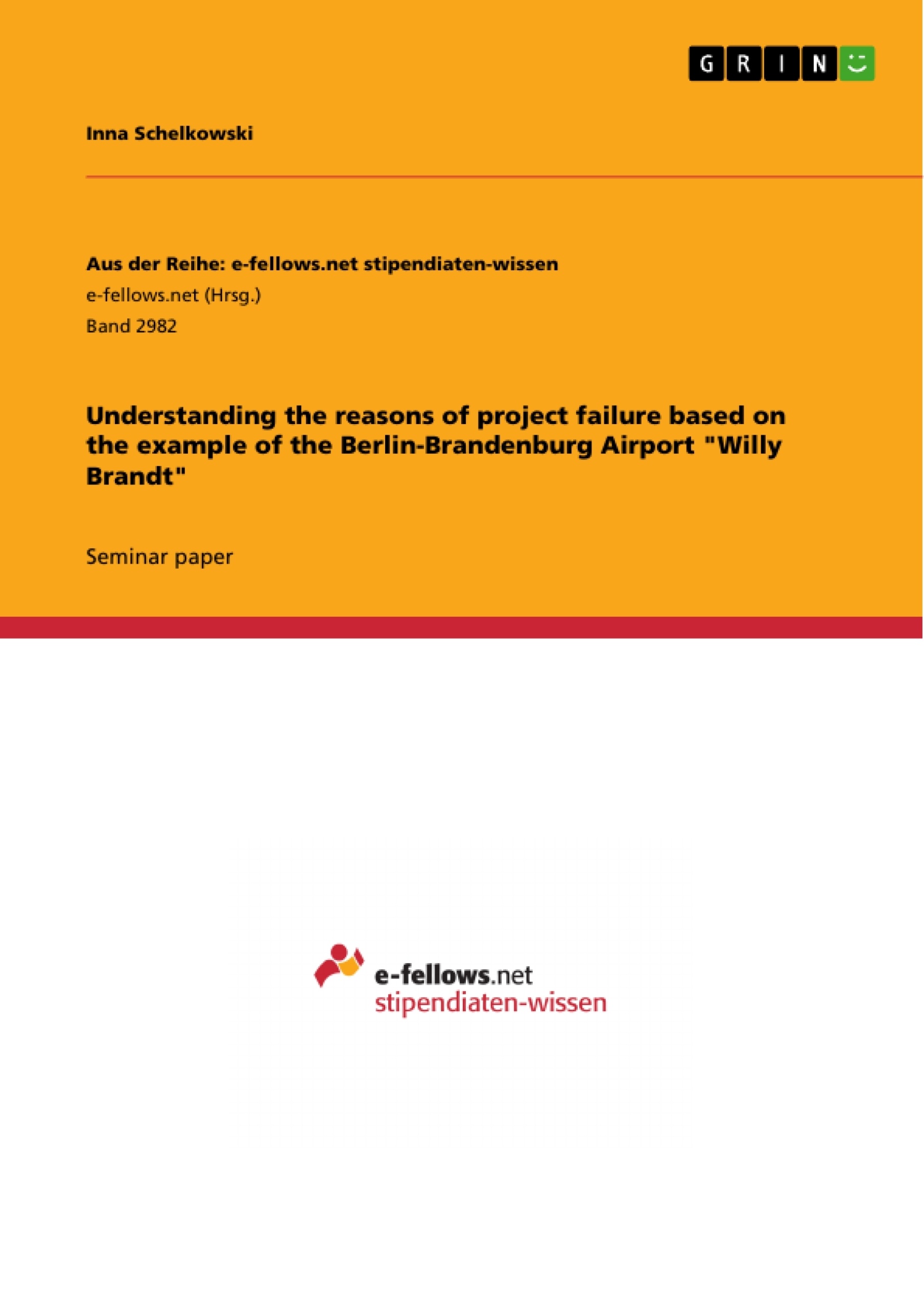The underlying paper was written with the purpose of understanding the reasons for project failure. Project failure in terms of project delays, cost increases and quality losses. In order to get a better understanding of the general failure reasons, the paper covers a real-time example of project failure. The chosen project is the construction project of the international airport Berlin Brandenburg (BER). The first chapter covers general aspects and characteristics of a project. Afterwards, the initial BER project plan and the current development state of the airport is explained. In the next chapter, the paper shows up a best-practice approach of how to successfully execute a construction project and how to meet arranged deliverables in a certain quality within the defined time and budget guidelines. Based on this knowledge, the following chapter deals with the actions that led to project failure of the BER project and shows up the deviations from the best-practice approach. It was concluded that several factors lead to project failure and that communication plays a significant role for project success.
Table of Contents
- Abstract
- Table of Contents
- List of Figures
- 1. What is a project what kind of different types and structures exist?
- 2. Representation of the airport Berlin-Brandenburg
- 2.1 How was the BER airport project initially planned?
- 2.2 How does the current project status look like?
- 3. Best practice approach for construction projects
- 4. Deviations from the best-practice approach and failures of the BER project
- 5. Conclusion and Summary
- Reference List
Objectives and Key Themes
This paper aims to analyze the reasons behind the failure of the Berlin-Brandenburg Airport (BER) construction project. It explores the project's initial planning, its current status, and the deviations from best-practice project management approaches that led to delays, cost overruns, and quality issues. The paper emphasizes the importance of effective communication in project success.
- Project management principles and best practices
- Challenges and failures in large-scale construction projects
- The role of communication in project success
- The case study of the Berlin-Brandenburg Airport (BER) project
- Analysis of factors contributing to project failure
Chapter Summaries
- Chapter 1: What is a project what kind of different types and structures exist? This chapter introduces the concept of a project and its characteristics. It explores different project types and structures, focusing on the categorization of projects based on social complexity and goal clarity. The chapter also provides a brief overview of the project life cycle and its five main phases: initiation, planning, execution, monitoring and control, and closure.
- Chapter 2: Representation of the airport Berlin-Brandenburg This chapter delves into the Berlin-Brandenburg Airport (BER) project, providing details about its initial planning and current status. It examines the project's timeline, the initial objectives, and the factors that have contributed to the project's delays and setbacks.
- Chapter 3: Best practice approach for construction projects This chapter outlines a best-practice approach for managing construction projects effectively. It highlights the importance of comprehensive planning, effective communication, and risk management in ensuring successful project completion. The chapter emphasizes the role of clearly defined scope, realistic schedules, and adequate resources in achieving project objectives.
- Chapter 4: Deviations from the best-practice approach and failures of the BER project This chapter analyzes the deviations from best-practice project management principles that contributed to the BER project's failures. It identifies specific challenges and shortcomings in the project's planning, communication, and execution phases, highlighting the impact of these factors on the project's overall success.
Keywords
The key terms and concepts discussed in this paper include project management, construction projects, project failure, best-practice approaches, communication, risk management, Berlin-Brandenburg Airport (BER), project delays, cost overruns, quality issues, and case study analysis.
- Quote paper
- Inna Schelkowski (Author), 2018, Understanding the reasons of project failure based on the example of the Berlin-Brandenburg Airport "Willy Brandt", Munich, GRIN Verlag, https://www.grin.com/document/454840



